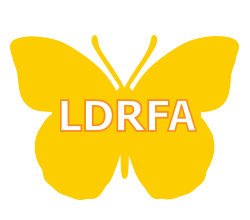by Zahavit Paz
Table of Contents
ToggleAnger masking self-image deficits experienced by individuals who suffer from ADHD (deficit hyperactivity disorder adhd) Dyslexia and learning disability people.
With very few exceptions, the angry people with dyslexia, I’ve worked with have suffered from significant self-image deficits. Many people with ADHD (attention deficit hyperactivity disorder) have been quite successful in their careers but far less so in their relationships, where anger triggers abound. Regardless of their professional achievements, however, almost all of them have been afflicted by an “I’m not good enough” attitude (and some with an additional “I’m a fraud” script as well).
In Steven Stosny’s excellent book Treating Attachment Abuse (1995), which delineates a comprehensive model for therapeutically dealing with both physical and emotional violence in close relationships, the author offers a chemical explanation of how anger—in the moment at least—can act as a sort of “psychological salve.” One of the hormones the brain secretes during anger arousal is norepinephrine, experienced by the organism as an analgesic.
Anger as Freud’s Forgotten Defense
According to Freud all defense mechanisms exist to protect the personality from an intolerable attack of anxiety when the ego is under siege; it’s strange that he never considered anger as serving this pivotal psychological function. But to regard an essential human emotion as mainly designed to safeguard an individual from another, much more distressful emotion, is hardly a line of reasoning Freud might have been expected to follow.
Still, in my own clinical experience, anger is almost never a primary emotion in that even when anger seems like an instantaneous, impulsive behaviors knee-jerk reaction to provocation, there’s always some other feeling that gave rise to it. And this particular feeling is precisely what the anger has contrived to camouflage or control your anger.
The simplest example of my admittedly unorthodox relegation anger to secondary, “reactive” status might relate to the universally frustrating situation of being cut off while driving.
Virtually children and adults I’ve ever asked has responded emphatically that their immediate reaction to such an event is anger. But when I further inquire as to what being “cut off” typically involves—namely, the very real threat of an accident—they realize that in the fraction of a second before acting successfully to avert a collision, their emotion must certainly have been one of apprehension or fear.
Cycling from the heightened arousal level of fear to an equally intense anger happens with such breathtaking speed that almost no one can recollect that flash of trepidation preceding the anger—easily distracted or even rage. (And rage itself seems mostly a more potent, or desperate, form of anger created to fend off an even more serious threat to one’s ego or sense of personal safety–whether that threat be mental, emotional or physical.)
The internal dynamic depicted in this illustration is the same with a whole host of emotions that, as soon as they begin to surface, can be effectively masked, squelched, or preempted through the emergence of secondary anger. And just as other defenses managing anger hinder healthy psychological coping (by hiding the underlying reality of anxiety that needs to be dealt with), so does anger belie the fragility of the ego that must depend on it for shielding and support.
If you are struggling with Dyslexia of Learning disabilities, LDRFA is offering an AWARD PROGRAM for ASSISTIVE TECHNOLOGY.
References:
What’s your Anger May Be Hiding. Source: Psychology Today
 Zahavit Paz is a co-founder of LD Resources Foundation. She’s a graduate of CUNY Graduate disabilities study program. She is often a presenter on Assistive Technology at professional conferences in schools and colleges and has written extensively on her personal struggle with Dyslexia and ADHD. She is an advocate for individuals with LD and provides resources and information through the LDRFA website. More info about Zahavit Paz.
Zahavit Paz is a co-founder of LD Resources Foundation. She’s a graduate of CUNY Graduate disabilities study program. She is often a presenter on Assistive Technology at professional conferences in schools and colleges and has written extensively on her personal struggle with Dyslexia and ADHD. She is an advocate for individuals with LD and provides resources and information through the LDRFA website. More info about Zahavit Paz.


